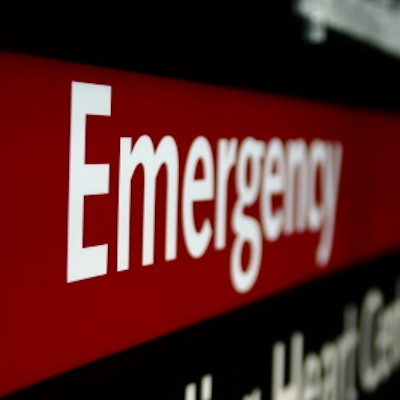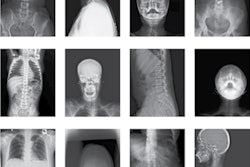
Radiology reports show an increase in fracture patients admitted to hospitals in San Diego due to falls from the U.S.-Mexico border wall, according to a study published May 12 in Surgery.
A team led by Dr. Todd Costantini of the University of California, San Diego reviewed reports of patients admitted to their trauma center before and after the border wall was raised by 30 feet in 2019. After the height increase, the number of patients admitted with fall-related fractures grew by 186%, they found.
"Our study further describes the evolving public health and humanitarian crisis at our southern border, illustrating the rapid rise in patients with traumatic lower extremity fractures sustained from barrier fall after the increase in border wall height," the group wrote.
San Diego County hospitals commonly care for patients injured by falls from the U.S.-Mexico border wall. Between 2018 to 2019, the height of about 400 miles of the existing border wall was raised. In this study, the authors aimed to examine the impact of the height increase on fracture burden and hospital resources.
The researchers reviewed radiology reports from patients admitted to their level 1 trauma center who had lower extremity or pelvic fractures sustained from a border wall fall, tracking demographic and treatment data, hospital charges, weight-bearing status at discharge, and follow-up, and comparing fracture rates between groups injured between 2016 and 2018 ("prewall group") and those injured between 2019 and 2021 ("postwall group").
The prewall group included 45 patients with 101 lower extremity fractures and the postwall group included 275 patients with 850 fractures -- an average of 2.2 versus 3.1 lower extremity fractures per patient, the authors wrote. In addition, in the post-wall group, hospital admissions increased by 537%, intensive care unit stays by 776%, ventilator use by 22%, and trips to the operating room by 468%.
This increased use of resources in the postwall group translated to an added $74 million in hospital charges, the authors noted.
"With the increased volume of patients, valuable hospital resources, including in-patient beds and operating rooms, were used to a greater extent in treating lower extremity fractures related to barrier fall," the researchers reported.
Policymakers should consider the costs of caring for border fall patients and the U.S. healthcare system should account for the heightened demand for these limited resources, the researchers urged.
"Costs of medical care should be considered when making policy decisions around mechanisms to deter unauthorized border crossings," they concluded.




















